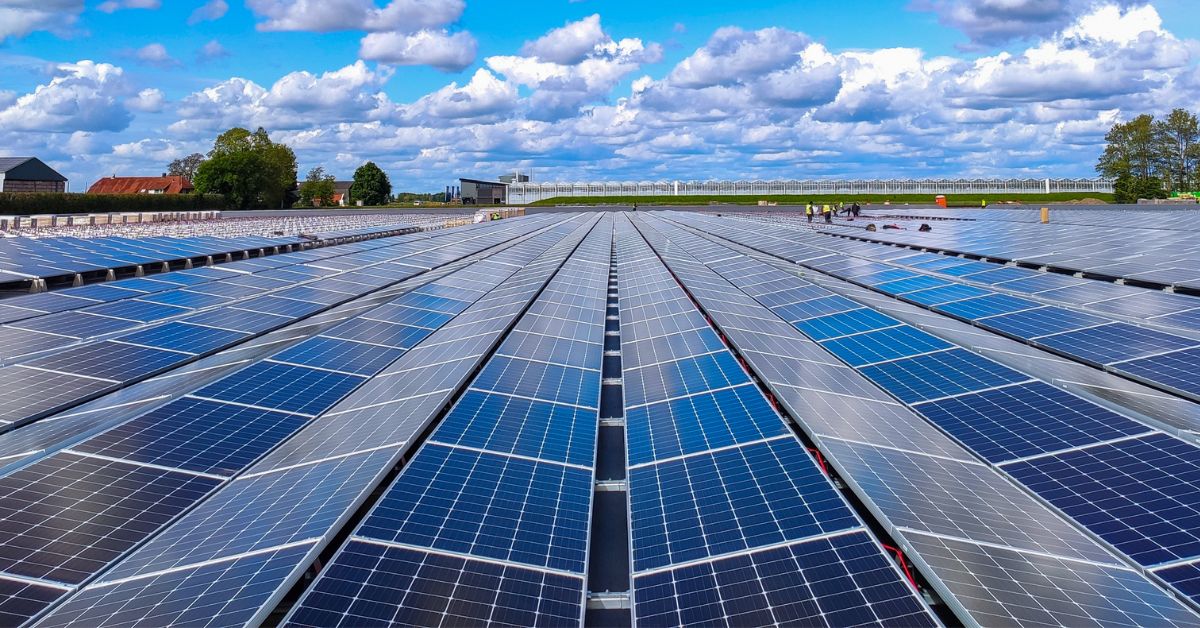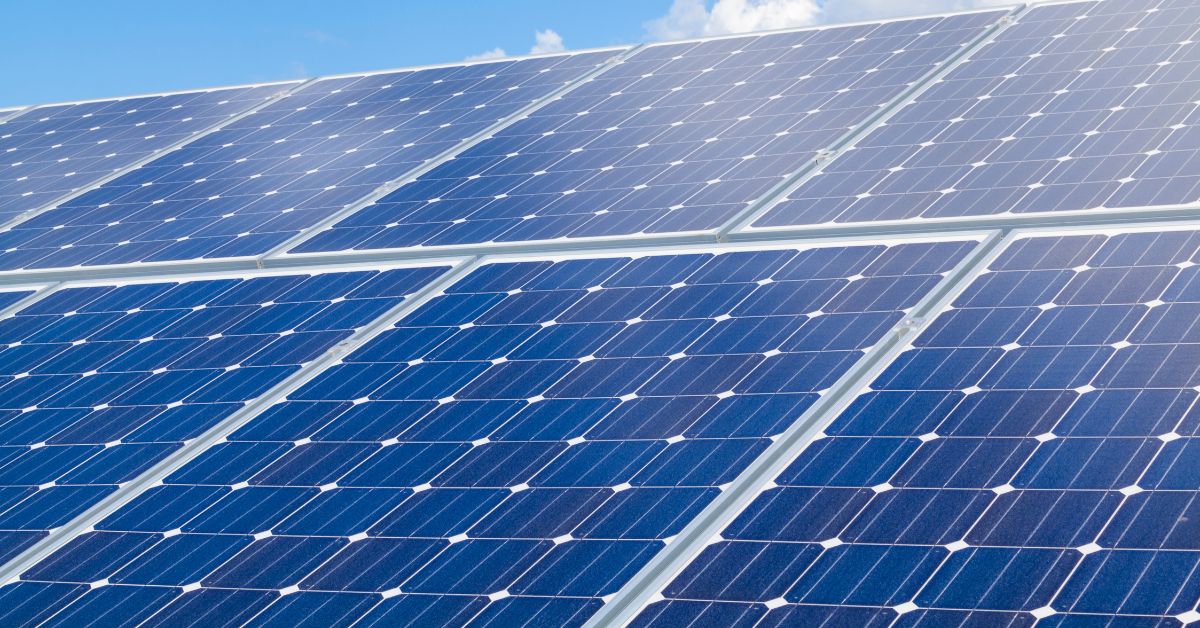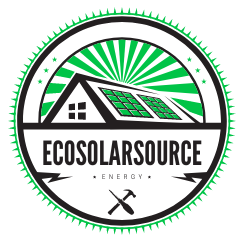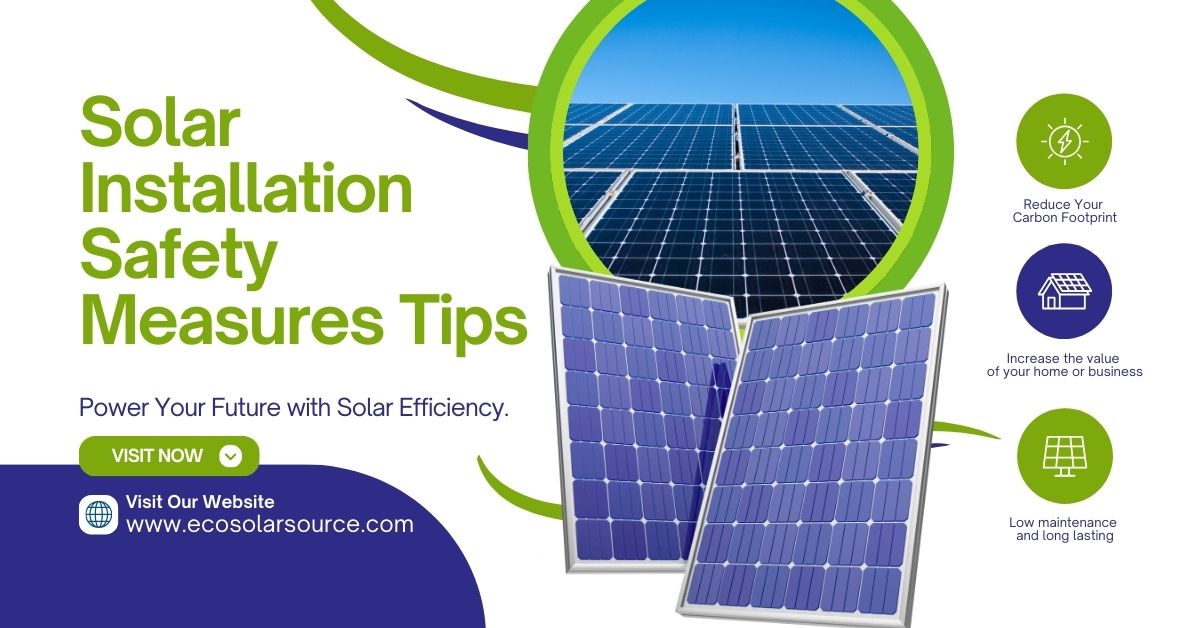Solar Installation Safety Measures Tips
Know the details about Solar Installation Safety Measures Tips, When installing solar panels, safety is paramount. First, ensure proper personal protective equipment (PPE) such as hard hats, gloves, and non-slip boots. Use fall protection gear, including harnesses and guardrails, when working at heights. Always follow electrical safety protocols: de-energize circuits, use insulated tools, and double-check grounding connections.
Clear the work area of debris to prevent trips and falls. Avoid working during bad weather, especially in wet or windy conditions. Regularly inspect tools, scaffolding, and ladders for damage. Finally, be aware of fire hazards and ensure all electrical components comply with local codes to minimize risks during and after installation.
Table of Contents
Solar Installation Safety Measures Tips
Solar energy is becoming an increasingly popular alternative to fossil fuels, thanks to its sustainability, cost-effectiveness, and environmental benefits. As more homeowners, businesses, and industries invest in solar photovoltaic (PV) systems, the importance of ensuring proper installation and safety practices cannot be overstated. Whether you’re a professional installer or a DIY enthusiast, prioritizing safety is critical to avoid accidents, optimize performance, and prolong the life of the system.
This blog post explores key solar installation safety measures and offers tips to guide you through a successful and secure solar panel setup. From understanding electrical hazards and working at heights to equipment care and maintenance, this comprehensive guide will help ensure that your solar installation process is safe, efficient, and effective.
Understanding Solar Installation Hazards
Before diving into the specifics of safety tips, it’s essential to understand the potential hazards that come with solar installations. Solar PV systems, while eco-friendly, can pose risks if not handled properly. These risks include:

- Electrical shocks: Solar panels generate electricity, which can cause shocks or fires if not managed correctly.
- Falls from heights: Many solar installations occur on rooftops, increasing the risk of falls.
- Burns: Solar panels can become very hot when exposed to direct sunlight, leading to burns.
- Heavy lifting injuries: Solar panels and other system components are bulky and heavy, posing the risk of back injuries.
- Chemical exposure: Handling batteries or using certain cleaning agents can expose you to harmful chemicals.
Understanding these hazards is the first step toward preventing them.
Pre-Installation Safety Preparation
Proper planning and preparation are crucial for ensuring safety throughout the solar installation process. Here are some important pre-installation safety measures:
- Site assessment: Before starting any installation, conduct a thorough site assessment. Identify potential hazards, such as weak roof structures, nearby power lines, and uneven terrain. This will help you plan your approach and mitigate risks.
- Check local regulations: Ensure compliance with local building codes and safety regulations. This may include zoning restrictions, fire safety codes, and electrical standards.
- Permits and inspections: Obtain the necessary permits before beginning your solar installation. Many regions require an inspection once the installation is complete to ensure it meets safety and code requirements.
- Weather monitoring: Avoid installing solar panels during adverse weather conditions such as rain, snow, or strong winds. Wet or slippery surfaces increase the risk of falls and make electrical work dangerous.
- Tool inspection: Inspect all tools and equipment before use to ensure they are in good working condition. Faulty tools can lead to accidents, so repair or replace damaged tools immediately.
- Training and awareness: If you’re part of a team, ensure that all team members are properly trained and aware of the safety protocols. A clear understanding of the roles and responsibilities can help prevent accidents.
Personal Protective Equipment (PPE)
Using the correct personal protective equipment (PPE) is one of the most effective ways to minimize the risk of injury. Here are some essential PPE items for solar installations:

- Hard hats: Protect your head from falling objects or accidental bumps, especially when working on a roof or with scaffolding.
- Safety glasses: Eye protection is crucial to safeguard against flying debris, dust, or accidental contact with chemicals.
- Gloves: Wear insulated gloves when handling electrical components to prevent shocks. Cut-resistant gloves are also useful when handling sharp tools or equipment.
- Non-slip footwear: Solar installations often occur on rooftops, so wearing non-slip shoes or boots with good traction is essential for preventing falls.
- Harnesses and lanyards: For rooftop installations, always use fall protection gear such as a full-body harness and lanyards anchored to a secure point.
- Sun protection: Long exposure to sunlight can lead to sunburn and heat exhaustion. Wear sunscreen, long sleeves, hats, and sunglasses to protect yourself from UV rays.
Electrical Safety
Since solar PV systems generate electricity, electrical safety should be a top priority during installation. Here are some key tips:
- Turn off the power: Before working on any electrical components, ensure the power is turned off at the main breaker. Solar panels may still generate voltage, even in low-light conditions, so cover the panels with opaque material to prevent energy generation during installation.
- Follow wiring protocols: Ensure all wiring is done according to the manufacturer’s instructions and local electrical codes. Incorrect wiring can cause fires, electrical shocks, or system malfunctions.
- Use insulated tools: Always use tools with insulated handles when working on electrical components to protect against electrical shocks.
- Avoid water exposure: Water is a conductor of electricity. Make sure all electrical connections are dry and avoid working on electrical components in wet conditions.
- Grounding: Proper grounding is essential for preventing electrical shocks and protecting the system from lightning strikes. Ensure that the PV system is correctly grounded according to local electrical codes.
- Labeling and marking: Clearly label all electrical components and circuits to prevent confusion during installation and maintenance. Mark any high-voltage areas to alert others of potential danger.
Working at Heights: Fall Prevention
One of the most common hazards in solar installations is the risk of falling from heights. Most installations take place on rooftops, which means fall prevention should be a primary concern.
- Use proper ladders: Ensure that the ladder is stable and tall enough for the job. Place the ladder on a level surface, and always maintain three points of contact when climbing (two hands and one foot or two feet and one hand).
- Install fall protection: When working on a roof, always use fall protection systems such as guardrails, personal fall arrest systems, or safety nets. Ensure that your harness and lanyard are properly anchored and adjusted for your weight.
- Be mindful of roof edges: Stay at least six feet away from roof edges when possible, and always use caution when working near the edge.
- Watch for skylights and openings: Treat skylights and roof openings as fall hazards. Install guards or barriers around them to prevent accidental falls.
- Secure tools and materials: Loose tools and materials can slide off the roof and pose a risk to people below. Secure everything properly to prevent accidents.
Weather Conditions
Weather plays a significant role in the safety of solar installations. Extreme temperatures, wind, rain, and other adverse conditions can increase the risk of accidents.
- Avoid working in extreme heat: Solar panels are usually installed outdoors, which means prolonged exposure to the sun. Installers should take breaks in the shade, stay hydrated, and wear light, breathable clothing to avoid heat-related illnesses.
- Wind and gusts: Strong winds can make it difficult to handle large solar panels, increasing the risk of dropping them or losing your balance. Avoid working in windy conditions, and secure all materials and tools on the rooftop.
- Rain and slippery surfaces: Wet surfaces are slippery, especially on roofs. Avoid working during or after rain until surfaces have dried. Electrical work should never be done in wet conditions due to the risk of electrocution.
- Cold weather: Cold conditions can make materials brittle and increase the risk of injury. Dress warmly and ensure that you have appropriate gloves for dexterity in colder temperatures.
Proper Use of Tools and Equipment
Having the right tools and knowing how to use them correctly is essential for safe solar installations.
- Tool selection: Use tools specifically designed for solar installations, including torque wrenches, insulated screwdrivers, and cable cutters. Using the wrong tool for the job can lead to injury or damage to the equipment.
- Inspect tools: Before using any tool, inspect it for damage or wear. Damaged tools can lead to accidents, so replace or repair them before use.
- Power tool safety: When using power tools, follow all manufacturer instructions and safety guidelines. Make sure the power tools are properly grounded and equipped with safety features like guards.
- Tool handling: Always keep tools in a secure place, especially when working at heights. Use tool belts or toolboxes to prevent them from falling off roofs or scaffolds.
Panel Placement and Structural Integrity
Ensuring that the roof or structure where the solar panels will be installed is strong enough to support their weight is critical.
- Structural assessment: Before installation, assess the roof’s condition. Older roofs may not be able to support the weight of solar panels and may need reinforcement or repairs. A structural engineer can evaluate whether the roof needs extra support.
- Mounting and racking systems: Use mounting and racking systems that are appropriate for the roof type and are certified for safety. Securely fasten the racking system to prevent the panels from becoming loose in high winds or other weather conditions.
- Roof penetrations: When installing mounting systems, make sure all roof penetrations are sealed properly to prevent leaks. Use flashing and sealants designed for solar installations to protect the roof from water damage.
Battery Safety in Solar Installations
Many solar PV systems are paired with battery storage to store excess energy for later use. Batteries pose specific safety challenges that require careful handling.
- Battery selection: Choose high-quality, certified batteries designed for solar energy storage. Lithium-ion and lead-acid batteries are common choices, but each has unique safety considerations.
- Proper ventilation: Batteries can produce hydrogen gas, which is highly flammable. Ensure that the battery storage area is well-ventilated to prevent gas buildup.
- Temperature control: Batteries are sensitive to temperature extremes. Install them in a temperature-controlled environment to prevent overheating or freezing, which can lead to battery failure or even fires.
- Protective casing: Enclose batteries in protective casings to prevent accidental contact with terminals, which can cause electrical shocks or short circuits.
- Fire safety: Install fire extinguishers rated for electrical fires near the battery storage area. Train all personnel on how to respond in the event of a battery fire.
Maintenance and Post-Installation Inspections
Proper maintenance and regular inspections are key to ensuring the long-term safety and efficiency of a solar PV system.
- Routine inspections: After installation, schedule regular inspections to ensure that all components are functioning correctly and safely. Check for loose wiring, damaged panels, and other signs of wear and tear.
- Cleaning the panels: Solar panels should be cleaned periodically to ensure optimal performance. Use appropriate cleaning tools and avoid harsh chemicals that could damage the panel surface.
- Check the inverter: The inverter is a crucial component of the solar system, converting DC power from the panels to AC power for use in homes or businesses. Ensure that the inverter is functioning properly by checking it regularly.
- Monitor energy output: Track the system’s energy output to detect any sudden drops in performance, which could indicate a problem with the panels or other components.
Emergency Protocols
In the event of an emergency, such as a fire or electrical malfunction, having clear protocols in place can save lives.

- Emergency shut-off switch: Install an emergency shut-off switch to disconnect the solar PV system from the grid in the event of an emergency.
- Fire safety plan: Work with local fire departments to ensure they are aware of the solar system and its layout. This will help them respond more effectively in case of a fire.
- First aid training: Ensure that all workers on-site have basic first aid training and know how to respond to common injuries, such as electrical shocks, falls, and burns.
Training and Certification for Solar Installers
Proper training and certification are essential for anyone involved in solar installations.
- Industry certification: Professional solar installers should have certifications from recognized industry bodies, such as the North American Board of Certified Energy Practitioners (NABCEP). Certification ensures that installers have the necessary knowledge and skills to perform installations safely.
- Continuing education: Solar technology is constantly evolving, so installers need to stay updated on the latest industry trends, tools, and safety protocols.
- Hands-on training: While classroom learning is valuable, hands-on training is essential for mastering the skills needed for safe solar installations. Apprenticeships and on-the-job training provide practical experience under the guidance of experienced professionals.
FAQs About Solar Installation Safety Measures Tips
Q1. Is it safe to install solar panels on my roof?
Tip: Yes, if installed correctly by a certified professional. Ensure your roof is structurally sound to bear the weight of solar panels. Regular inspections and reinforcement might be needed if your roof is old.
Q2. Do solar panels pose a fire risk?
Tip: Solar panels themselves are not a fire hazard, but improper installation can cause electrical faults. Always hire licensed electricians and ensure that wiring follows safety standards (e.g., UL-certified components).
Q3. What safety precautions should be taken during installation?
Tip: Installers should use proper personal protective equipment (PPE), secure ladders, and fall protection systems to prevent accidents. A risk assessment of the work environment should be conducted before installation.
Q4. Can solar panels be damaged by lightning?
Tip: Solar panels can be protected by installing surge protection devices (SPDs) and proper grounding. Consult with your installer to ensure a lightning protection system is in place.
Q5. Is it safe to walk on solar panels?
Tip: No, walking on solar panels can cause damage and pose a risk of injury. Roof access should be carefully planned, with walkways or platforms installed where necessary for maintenance.
Q6. How do I protect my solar system during severe weather events?
Tip: Solar panels are designed to withstand most weather conditions, but in areas prone to hurricanes or hail, consider impact-resistant panels and have your mounting hardware checked for stability. Regular maintenance is key to weatherproofing.
Q7. What electrical safety measures should be followed for solar installation?
Tip: Ensure that all wiring is properly insulated, conduits are used to protect cables, and disconnect switches are installed for emergency shut-off. All electrical components should comply with national and local codes.
Q8. How do I avoid electrical shock while cleaning or maintaining my solar panels?
Tip: Always turn off the system before cleaning, wear non-conductive gloves, and use insulated tools. Cleaning should be done during the early morning or late afternoon to avoid working on hot panels.
Q9. Are there safety measures to protect my solar panels from theft or vandalism?
Tip: Install anti-theft mounting hardware, motion-sensing lights, and security cameras. Ground-mounted panels can be fenced for extra protection.
Q10. What should I do if my solar panels are damaged?
Tip: If you notice damage, turn off the system immediately and call a professional. Avoid touching any broken panels or exposed wiring, as they can be hazardous. Regular inspections can help catch damage early.
Installing a solar PV system is a great step toward a sustainable future, but it requires careful attention to safety at every stage. From pre-installation preparation and proper use of PPE to ensuring electrical and fall protection measures are in place, these solar installation safety tips will help you create a safe working environment and a reliable solar energy system. Always prioritize safety over speed, and never compromise on the quality of equipment or procedures.
By following these guidelines, you can avoid accidents, protect yourself and your team, and ensure a successful solar installation that performs efficiently for years to come.
Click here to learn more about Solar Installation Safety Measures Tips
Click here to learn more about Solar Wind Power Increase as Payment Delays Drop Fitch

